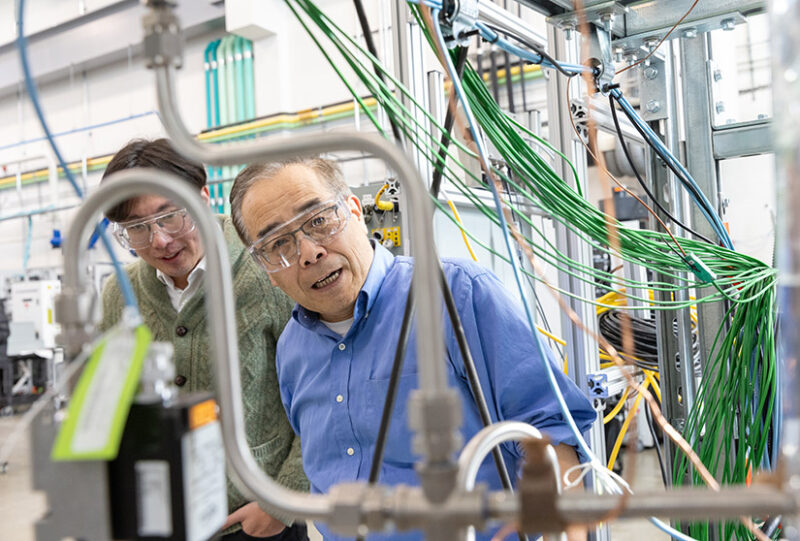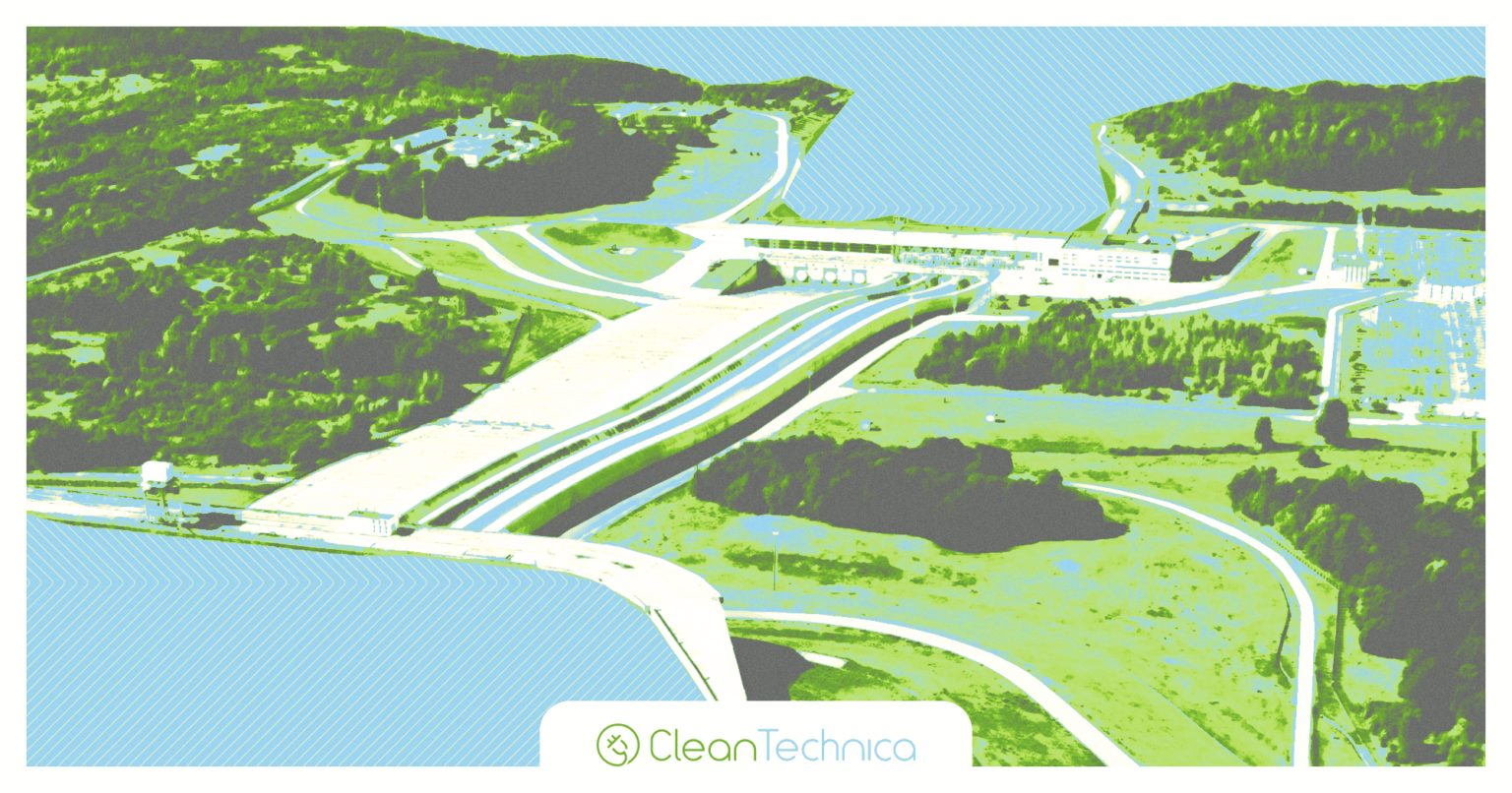[ad_1]
Join day by day information updates from CleanTechnica on e mail. Or comply with us on Google Information!
Anybody who has ever hot-footed it barefoot throughout the seaside on a sunny day walks away with a larger understanding of simply how a lot warmth sand can retain. That capability is predicted to play a significant function sooner or later, as expertise involving heated sand turns into a part of the reply to power storage wants.
Batteries are doubtless what most individuals take into consideration when it comes to storing power for later use, however different applied sciences exist. Pumped storage hydropower is one frequent methodology, albeit one which requires reservoirs at completely different elevations and is restricted by geography. One other strategy depends on what is named thermal power storage, or TES, which makes use of molten salt and even superheated rocks.

TES exhibits promise as a low-cost different to current storage applied sciences, and storing power in stable particles comparable to sand offers a prepared reply, with out geological restrictions.
In spite of everything, sand, like air and water, is in all places.
“Sand is simple to entry. It’s environmentally pleasant. It’s steady, fairly steady, in a large temperature vary. It’s also low value,” stated Zhiwen Ma, a mechanical engineer within the laboratory’s Thermal Vitality Methods Group.
The Want for Lengthy-Time period Storage
Patented expertise developed and prototyped at NREL reveals how heaters powered by renewable power sources like wind and photo voltaic can increase the temperature of sand particles to the specified temperature. The sand is then deposited right into a silo for storage and use later, both to generate electrical energy or for course of warmth in industrial functions. A laboratory-scale prototype validated the expertise and allowed researchers to create a pc mannequin that exhibits a commercial-scale system would retain greater than 95% of its warmth for a minimum of 5 days.
“Lithium-ion batteries have actually cornered the market at two to 4 hours of storage, but when we need to obtain our carbon discount targets, we are going to want long-duration power storage units—issues that may retailer power for days,” stated Jeffrey Gifford, a postdoctoral researcher at NREL.
Gifford, who already shares two patents with Ma on warmth exchangers that convert saved thermal power to electrical energy, stated the usage of sand or different particles to retailer thermal power has one other benefit over batteries. “Particle thermal power storage doesn’t depend on rare-earth supplies or supplies which have advanced and unsustainable provide chains. For instance, in lithium-ion batteries, there are lots of tales concerning the problem of mining cobalt extra ethically.”
Along with TES, Gifford’s experience is in computational fluid dynamics. That data is essential as a result of the sand must movement via the storage system. Different TES media consists of concrete and rocks, which might simply retain warmth however stay solidly in place. “Your warmth switch is way increased and far faster and far more efficient if you happen to’re shifting your media,” Gifford stated.
TES additionally has one other key benefit: the price. Ma has calculated sand is the most affordable possibility for power storage when in comparison with 4 rival applied sciences, together with compressed air power storage (CAES), pumped hydropower, and two sorts of batteries. CAES and pumped hydropower can solely retailer power for tens of hours. The price per kilowatt-hour for CAES ranges from $150 to $300, whereas for pumped hydropower it’s about $60. A lithium-ion battery would value $300 a kilowatt-hour and solely have a capability to retailer power from one to 4 hours. With a period lasting a whole lot of hours, sand as a storage medium would value from $4 to $10 a kilowatt-hour. To make sure low value, the warmth could be generated utilizing off-peak, low-price electrical energy.
Ma, who holds a handful of patents on the expertise, beforehand served because the principal investigator on an ARPA-E funded mission often known as ENDURING, for Financial Lengthy-Length Electrical energy Storage by Utilizing Low-Value Thermal Vitality Storage and Excessive-Effectivity Energy Cycle. The prototype got here from this mission. Subsequent up is the groundbreaking in 2025 on an electrical thermal power storage (ETES) system at NREL’s Flatirons Campus exterior Boulder, Colorado, that might be designed to retailer power for between 10 and 100 hours. The stand-alone system is free from any siting restrictions that restrict the place CAES or pumped storage hydropower may be established.
The DOE-funded demonstration mission, Ma stated, is meant to point out the business potential of sand for TES.
Molten salts are already in use to quickly retailer power, however they freeze at about 220 levels Celsius (428 levels Fahrenheit) and begin to decompose at 600 C. The sand Ma intends to make use of comes out of the bottom within the Midwest of the US, doesn’t must be saved from “freezing,” and might retain significantly extra warmth, within the vary of 1,100 C (2,012 F) that may retailer warmth for energy technology or to interchange burning fossil fuels for industrial warmth.
“This represents a brand new technology of storage past molten salt,” Ma stated.

Deciding What Will Retailer the Warmth
However will simply any previous sand do? Not in line with NREL researchers, who examined numerous stable particles for his or her capability to movement and to retain warmth. In a paper printed final fall, Ma and others experimented on eight stable particle candidates. Among the many particles thought-about have been man-made ceramic supplies utilized in fracking, calcined flint clay, brown fused alumina, and silica sand. The clay and fused alumina have been rejected due to thermal instability on the goal temperature of 1,200 levels Celsius (2,192 levels Fahrenheit).
The ceramic supplies outperformed the sand in all classes, however the marginal efficiency features have been thought-about inadequate to justify the upper value. Whereas the sand prices from $30 to $80 a ton, the costs of the ceramic supplies have been about two magnitudes increased. The sand is within the ultra-pure type of alpha quartz and available within the Midwest.
Increasing the quantity of power that may be saved in sand is so simple as including extra sand, stated Craig Turchi, supervisor of the Thermal Vitality Science and Applied sciences Analysis Group at NREL.
“That’s a marginal value so as to add further storage capability,” he stated. “We want storage starting from minutes to months. Batteries labored rather well within the minutes to hours area when it comes to how they scale. And whenever you get into months of storage, you’re normally making a gas like hydrogen to supply that long-term storage. However within the interval between a number of hours and two weeks, there’s not a superb match proper now. Hydrogen is simply too costly for that. Batteries are too costly for that.”
The elements wanted to transform the superheated sand again to electrical energy does require an upfront value. “However when you’ve paid for that,” Turchi stated, “if you happen to simply need to have extra period in your energy it’s a lot, less expensive so as to add extra sand than the choice, which is to maintain including batteries.”
By Wayne Hicks. Courtesy of Division of Vitality, NREL.
Have a tip for CleanTechnica? Wish to promote? Wish to recommend a visitor for our CleanTech Discuss podcast? Contact us right here.
Newest CleanTechnica TV Video
CleanTechnica makes use of affiliate hyperlinks. See our coverage right here.
[ad_2]


